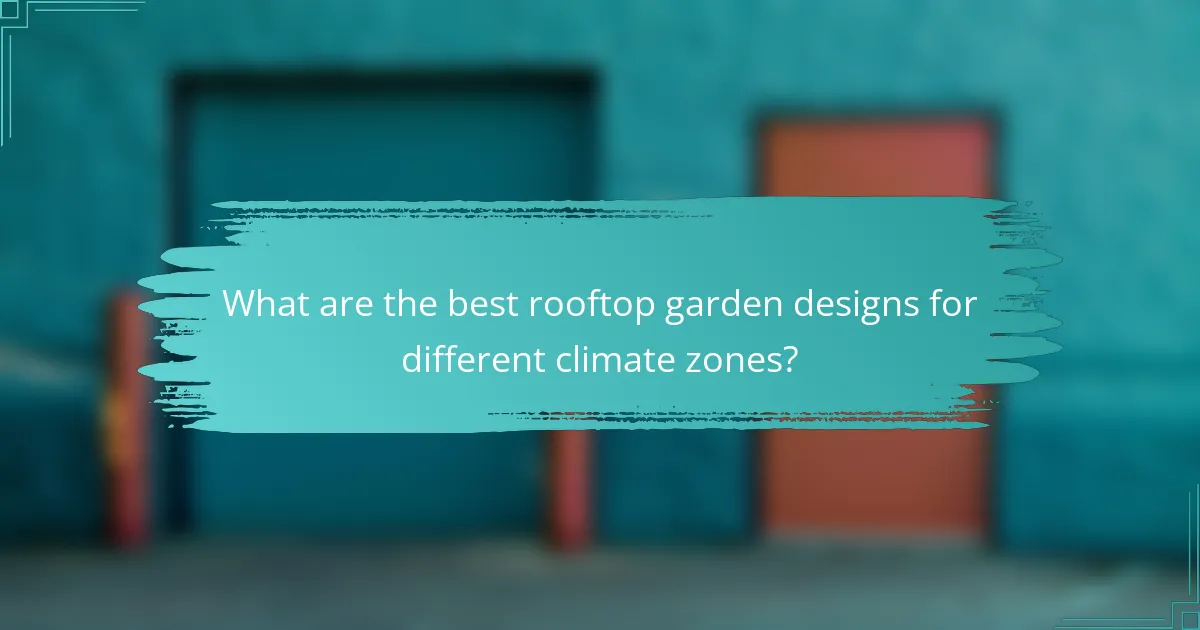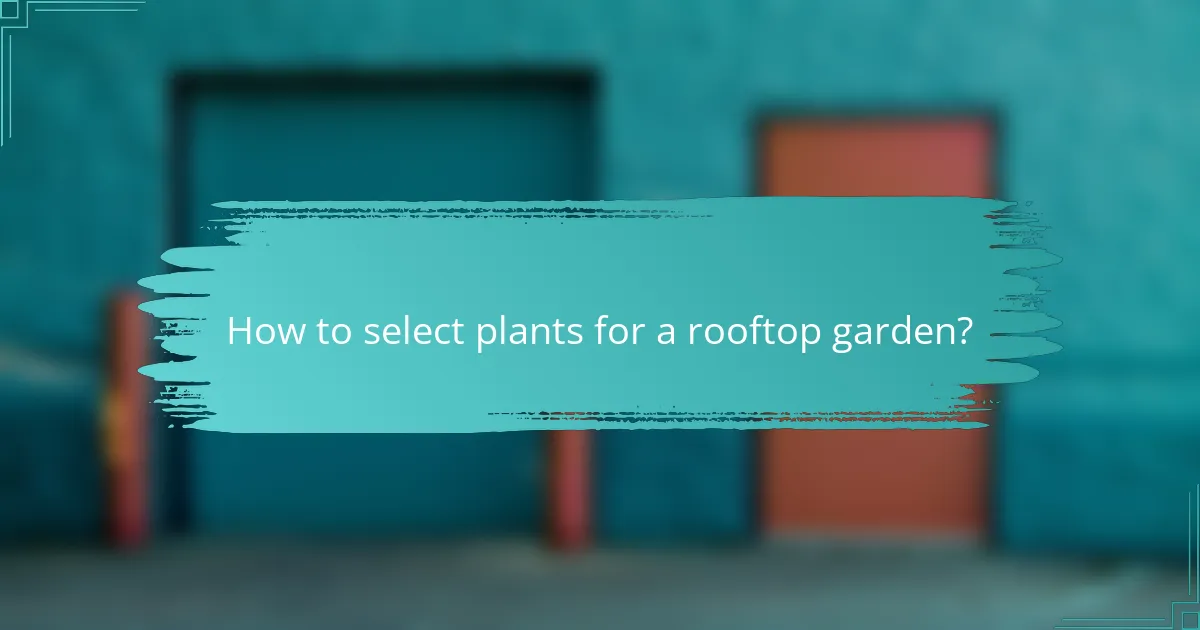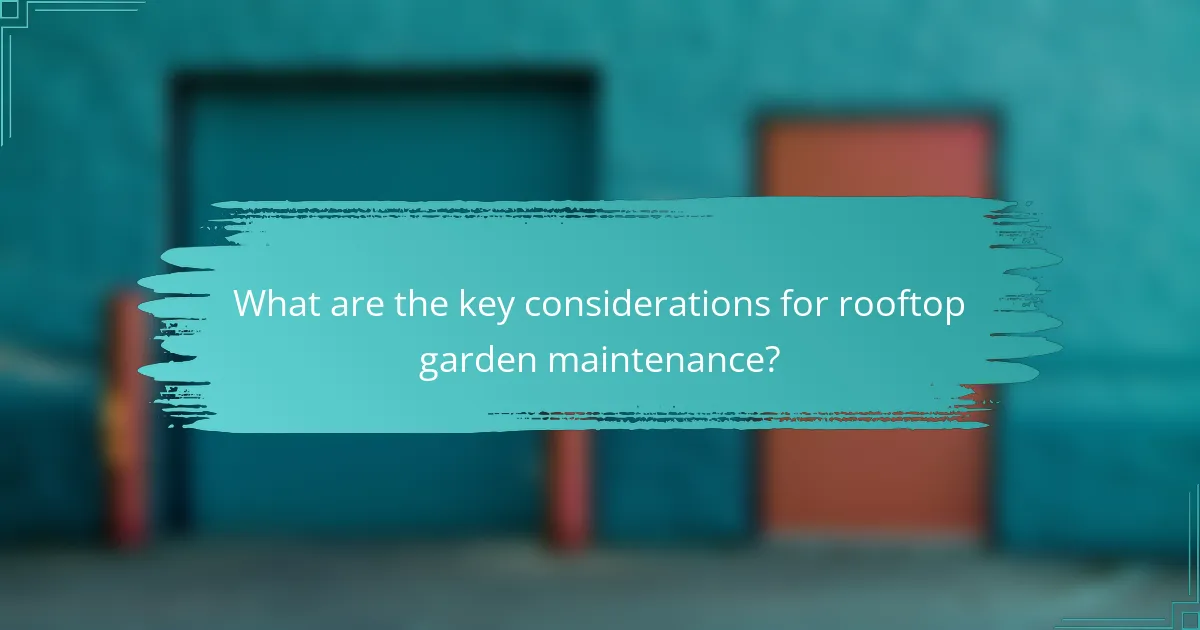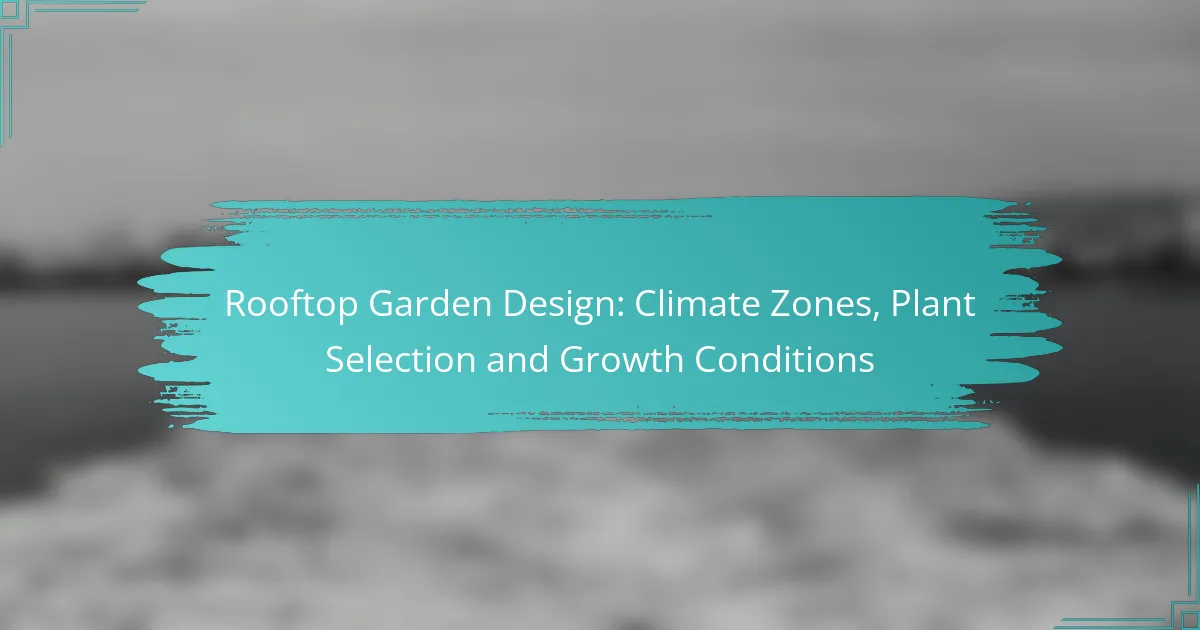Designing a successful rooftop garden requires careful consideration of climate zones, as each presents distinct challenges and opportunities for plant selection and growth conditions. By understanding local environmental factors such as sunlight, wind exposure, and space availability, gardeners can choose plants that will thrive. Additionally, ensuring optimal soil composition, adequate sunlight, effective watering systems, and temperature management is essential for fostering a vibrant rooftop ecosystem.

What are the best rooftop garden designs for different climate zones?
The best rooftop garden designs vary significantly across climate zones, as each zone presents unique challenges and opportunities for plant selection and growth conditions. Understanding these differences is crucial for creating a thriving rooftop garden that meets local environmental needs.
Temperate climate rooftop gardens
In temperate climates, rooftop gardens can flourish with a diverse range of plants due to moderate temperatures and seasonal changes. Consider incorporating perennials, shrubs, and vegetables that can withstand both warm summers and cold winters.
Key plants include lavender, ornamental grasses, and hardy vegetables like kale and lettuce. Ensure proper drainage and soil depth to support root growth, and consider using raised beds to optimize space and soil quality.
Tropical climate rooftop gardens
Tropical rooftop gardens thrive in warm, humid conditions, making it essential to select plants that can tolerate high moisture levels and intense sunlight. Focus on using native species that are adapted to the local climate.
Examples of suitable plants include hibiscus, ferns, and various fruit trees like mango and banana. Utilize shade structures to protect sensitive plants from direct sunlight during peak hours and ensure adequate irrigation systems to manage water needs.
Arid climate rooftop gardens
In arid climates, rooftop gardens must be designed to conserve water and withstand high temperatures. Drought-resistant plants are vital for success in these environments.
Consider succulents, cacti, and native desert plants that require minimal water. Implementing drip irrigation systems and using mulch can help retain moisture and reduce water usage, making the garden more sustainable.
Cold climate rooftop gardens
Cold climates pose challenges such as frost and snow, so rooftop gardens need to be designed with winter resilience in mind. Select hardy plants that can survive freezing temperatures and short growing seasons.
Examples include evergreens, alpine plants, and cold-tolerant vegetables like carrots and spinach. Insulating materials for planters and windbreaks can help protect plants from harsh winter conditions.
Subtropical climate rooftop gardens
Subtropical climates offer a mix of warm and mild conditions, allowing for a variety of plant choices. Focus on plants that can handle both heat and occasional cold snaps.
Suitable options include citrus trees, bougainvillea, and various herbs. Incorporate shaded areas to protect plants from excessive heat and ensure proper soil drainage to prevent root rot during heavy rains.

How to select plants for a rooftop garden?
Selecting plants for a rooftop garden involves considering the unique environmental conditions, such as sunlight, wind exposure, and available space. Choose plants that thrive in these conditions to ensure a successful and sustainable garden.
Native plant selection
Native plants are well-adapted to the local climate and soil conditions, making them an excellent choice for rooftop gardens. They typically require less water and maintenance compared to non-native species. Research local flora to identify plants that can thrive in your specific region.
Incorporating native plants can also support local wildlife, such as pollinators, enhancing biodiversity. Consider plants like coneflowers or black-eyed Susans if you are in temperate regions.
Succulent and drought-resistant plants
Succulents and drought-resistant plants are ideal for rooftop gardens, especially in areas with limited water supply. These plants store water in their leaves, allowing them to survive in dry conditions. Varieties such as sedum, agave, and aloe vera are popular choices.
When selecting these plants, ensure they receive adequate sunlight, as most thrive in bright conditions. Grouping them together can create a visually appealing arrangement while minimizing water usage.
Shade-tolerant plants
If your rooftop garden has limited sunlight due to surrounding buildings or structures, consider shade-tolerant plants. These plants can thrive in partial to full shade and often require less water. Options include ferns, hostas, and certain types of ivy.
When designing your garden, place shade-tolerant plants in areas that receive the least light. This will help create a lush, green space even in challenging conditions.
Edible plants for rooftop gardens
Growing edible plants in a rooftop garden can be rewarding and practical. Herbs like basil, mint, and parsley are easy to grow and can thrive in containers. For vegetables, consider compact varieties of tomatoes, peppers, and lettuce.
Ensure that the containers used for edible plants have proper drainage and are filled with high-quality potting soil. Regularly check for pests and diseases to maintain healthy plants and a bountiful harvest.

What are the ideal growth conditions for rooftop gardens?
The ideal growth conditions for rooftop gardens include suitable soil composition, adequate sunlight, effective watering systems, and temperature management. Each of these factors plays a crucial role in ensuring that plants thrive in the unique environment of a rooftop setting.
Soil composition and drainage
Rooftop gardens require lightweight soil that retains moisture while providing good drainage. A mix of organic matter, such as compost, and inorganic materials like perlite or expanded clay can create an ideal growing medium. Aim for a soil depth of at least 6 to 12 inches to support root growth.
Ensure that the soil is well-aerated to prevent waterlogging, which can harm plant roots. Incorporating drainage layers, such as gravel or sand, can help manage excess water and promote healthy plant growth.
Sunlight requirements
Most rooftop gardens benefit from full sun, which typically means at least 6 hours of direct sunlight daily. However, some plants can tolerate partial shade, making it essential to select species based on the specific light conditions of your rooftop. Consider the orientation of your roof when planning your garden.
For optimal growth, monitor sunlight exposure throughout the day and adjust plant placement accordingly. Using reflective materials can enhance light availability for shade-tolerant plants.
Watering and irrigation systems
Effective watering is critical for rooftop gardens, especially in hot climates where evaporation rates are high. Drip irrigation systems are often recommended as they deliver water directly to the roots, minimizing waste and ensuring consistent moisture. Aim to water early in the morning or late in the evening to reduce evaporation.
Regularly check soil moisture levels to avoid overwatering, which can lead to root rot. A moisture meter can be a useful tool for maintaining optimal hydration.
Temperature management
Temperature fluctuations can significantly impact rooftop gardens, as roofs tend to absorb and retain heat. Selecting heat-tolerant plants can help mitigate the effects of high temperatures. Additionally, using mulch can help regulate soil temperature and retain moisture.
Consider implementing shade structures or using reflective materials to lower temperatures during peak heat. Monitoring local weather conditions can also help you anticipate temperature changes and protect sensitive plants accordingly.

What are the key considerations for rooftop garden maintenance?
Rooftop garden maintenance involves regular care to ensure plant health and sustainability. Key considerations include establishing consistent watering schedules and effectively managing pests and diseases.
Regular watering schedules
Establishing a regular watering schedule is crucial for rooftop gardens due to their unique exposure to sun and wind. Most rooftop plants require watering at least once a week, but this can vary based on the plant species, weather conditions, and soil type.
Consider using a drip irrigation system to automate watering, which can save time and ensure consistent moisture levels. Monitor the soil moisture regularly; if it feels dry an inch below the surface, it’s time to water.
Pest and disease management
Effective pest and disease management is essential for maintaining a healthy rooftop garden. Regularly inspect plants for signs of pests such as aphids or spider mites, and take action quickly to prevent infestations.
Utilize organic pest control methods, such as introducing beneficial insects or using neem oil, to minimize chemical use. Additionally, practice crop rotation and remove any diseased plants promptly to reduce the spread of pathogens.
